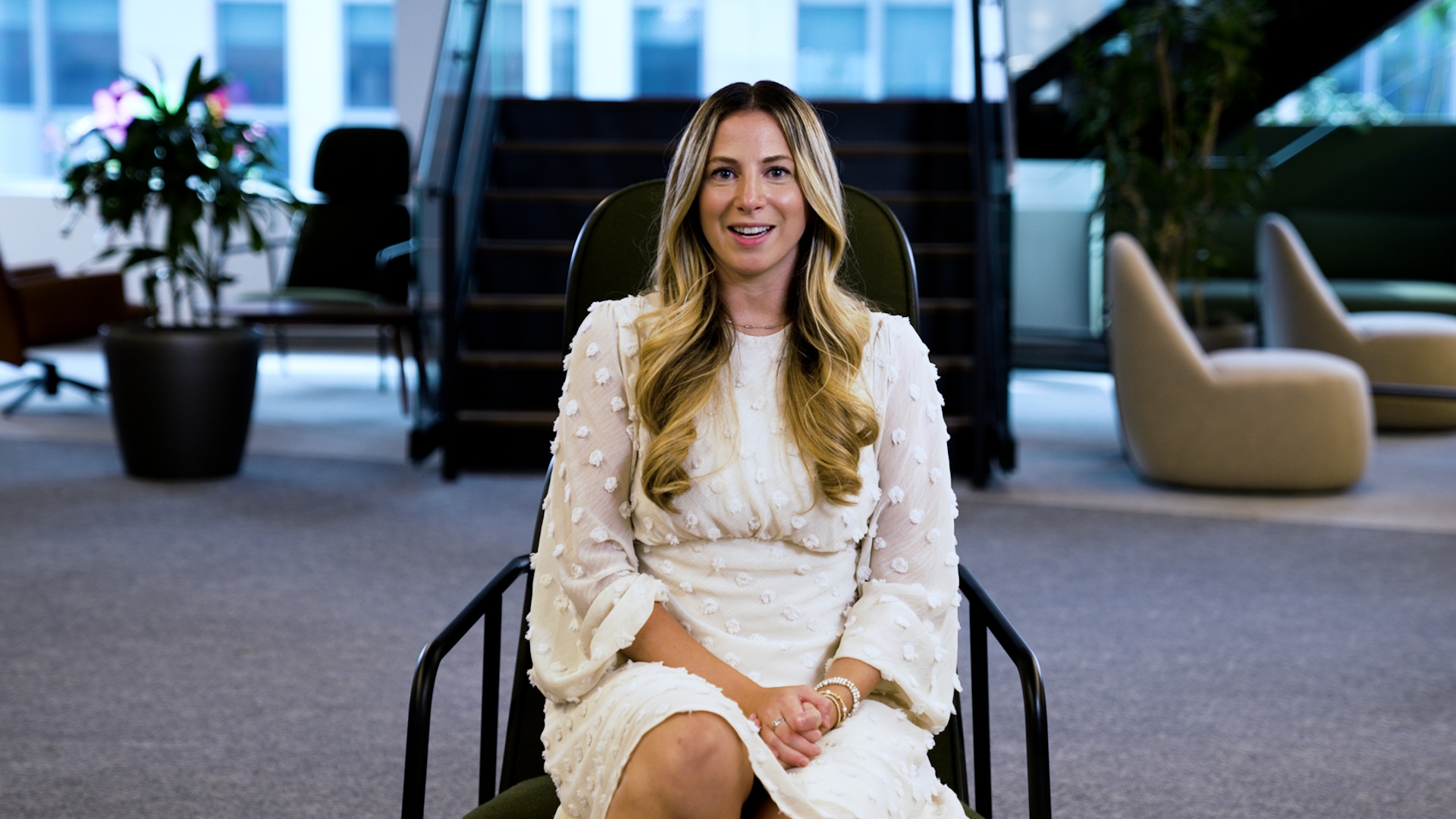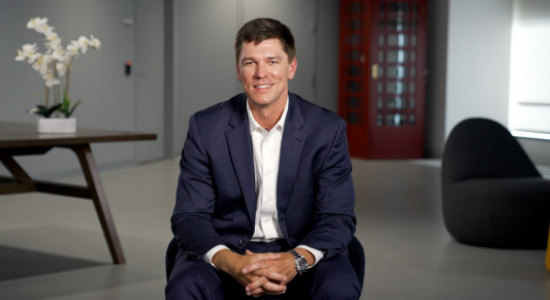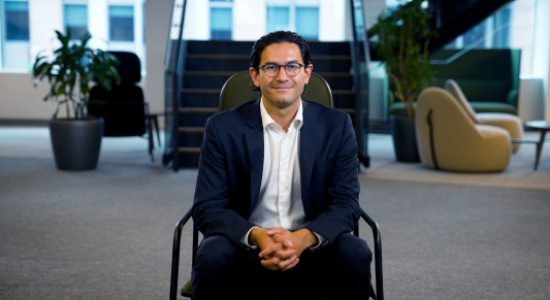 We need to shift the mindset of boards and investors to understand the value, and not just the risk, created from the optionality of integrated portfolios. This means entering new physical and traded marketsJoanne Salih, Partner
We need to shift the mindset of boards and investors to understand the value, and not just the risk, created from the optionality of integrated portfolios. This means entering new physical and traded marketsJoanne Salih, Partner
- About this video
- Transcript
History shows that succeeding in the energy transition requires commercially viable solutions. Learn three key strategies for oil and gas sectors to thrive.
Oliver Wyman Takes On Series
In this video series, energy and natural resources experts share their take on how businesses can harness risk, turn climate intent into action, and lead in the age of acceleration.
We’ve been through many forms of the energy transition without resounding success, which is why we're still grappling with the question today. Despite great strategies and targets, the commercial case is not always clear. And when the financial reality of commodity cycles hit us, they often make or break the case for change. Just look at the last two years as an example. If we don't build profitable low-carbon portfolios that drive growth, we are doomed to fail again. So how do we make sure that we don't miss the mark this time?
I'm Joanne Salih, a partner in the Oliver Wyman Energy Practice. I'm talking to you from my new office here in the US. After a decade of working across Europe, the Middle East, and Africa. I can tell you my suitcase has certainly taken a battering during that time. The last time I was here, I was a trainee at a law firm looking at the impact of an offshore oil spill at a time when public trust in the oil and gas industry left a lot to be desired.
Today, here in Houston, what some would call the heart of the oil and gas industry, I'm working with these same companies on how we deliver on the energy transition, securing a sustainable system that isn't divorced from financial reality.
I'll skip the history lesson, but the transition is nothing new. In the 2000s, leading oil and gas companies built renewable portfolios and made calls for the development of electrification infrastructure. Those portfolios were largely dismantled when the economic reality of commodity price crashes and capital constraints required divestments. The lesson from that time can be applied today. With the best intentions and strategies, we will not succeed if the transition to green is not commercially viable.
So, the question that clients often ask is, "What does it take to survive and grow?" If we turn to the markets, they tell us as an industry that we need to show performance and growth to be investable. After all, we're talking about capital markets, and that means three things.
Firstly, refining our investment focus and proving value. We need to actually deliver and show value through the transition. Our investor base will not wait 15 years for potential upsides. In that sense, what we do is just as important as what we don't do. That means significantly pairing down portfolios to projects that will show near- to mid-term returns and are achievable with the tools at hand. The ability to do this effectively can be seen in the oil and gas industry today. Those with focus trade at premiums versus those who are seen to be attempting all aspects of hydrocarbon and low-carbon portfolios trading at a discount. This also means explaining to a wider stakeholder environment the uncomfortable reality that hydrocarbons are a necessary part of our existing energy system. It provides the necessary capital to reinvest in the future.
Secondly, when targets are clear, we need to make them a reality and ensure capital is available to deploy. We need to shift the mindset of boards and investors to understand the value, and not just the risk, created from optionality of integrated portfolios. This means entering new physical and traded markets. Transitioning the investor base towards a growth mindset will be critical to reinvesting the war chest built during the last couple of years versus paying dividend.
Thirdly, to be successful, we need more than just internal alignment and bravery. We need the support of the financial services industry and regulators, effectively making the transition affordable. Not all those pursuing the transition have the size and balance sheet that can support unleveraged capital deployment. For example, mid-caps. Even larger companies will face challenges as capital becomes more constrained. So, internally, we need to understand new financial and operating model structures may be required to invest in multiple engines of growth, appreciating that transforming whole companies may not be viable. Externally, we need to engage financial institutions to adjust currently stringent ESG and risk frameworks to accept a broader portfolio of project types, as long as it supports longer-term decarbonization.
Ultimately, pursuing the transition is critical, but we need to reframe the conversation from how we manage risk to how we create value. Whilst I wish I had a crystal ball into the future, none of us truly know what the next 10 to 15 years will pan out like. But that's why I joined consulting and fell in love with the energy industry. Because not only do we get to identify the challenges, but we get to be the lucky few that help to remove the barriers. There is a lot to get done and I think it's incredibly exciting to be a part of it.
I'm Joanne Salih, and this is my take on making the oil and gas industry investable today so that we can support a lower carbon tomorrow.
This transcript has been edited for clarity
- About this video
- Transcript
History shows that succeeding in the energy transition requires commercially viable solutions. Learn three key strategies for oil and gas sectors to thrive.
Oliver Wyman Takes On Series
In this video series, energy and natural resources experts share their take on how businesses can harness risk, turn climate intent into action, and lead in the age of acceleration.
We’ve been through many forms of the energy transition without resounding success, which is why we're still grappling with the question today. Despite great strategies and targets, the commercial case is not always clear. And when the financial reality of commodity cycles hit us, they often make or break the case for change. Just look at the last two years as an example. If we don't build profitable low-carbon portfolios that drive growth, we are doomed to fail again. So how do we make sure that we don't miss the mark this time?
I'm Joanne Salih, a partner in the Oliver Wyman Energy Practice. I'm talking to you from my new office here in the US. After a decade of working across Europe, the Middle East, and Africa. I can tell you my suitcase has certainly taken a battering during that time. The last time I was here, I was a trainee at a law firm looking at the impact of an offshore oil spill at a time when public trust in the oil and gas industry left a lot to be desired.
Today, here in Houston, what some would call the heart of the oil and gas industry, I'm working with these same companies on how we deliver on the energy transition, securing a sustainable system that isn't divorced from financial reality.
I'll skip the history lesson, but the transition is nothing new. In the 2000s, leading oil and gas companies built renewable portfolios and made calls for the development of electrification infrastructure. Those portfolios were largely dismantled when the economic reality of commodity price crashes and capital constraints required divestments. The lesson from that time can be applied today. With the best intentions and strategies, we will not succeed if the transition to green is not commercially viable.
So, the question that clients often ask is, "What does it take to survive and grow?" If we turn to the markets, they tell us as an industry that we need to show performance and growth to be investable. After all, we're talking about capital markets, and that means three things.
Firstly, refining our investment focus and proving value. We need to actually deliver and show value through the transition. Our investor base will not wait 15 years for potential upsides. In that sense, what we do is just as important as what we don't do. That means significantly pairing down portfolios to projects that will show near- to mid-term returns and are achievable with the tools at hand. The ability to do this effectively can be seen in the oil and gas industry today. Those with focus trade at premiums versus those who are seen to be attempting all aspects of hydrocarbon and low-carbon portfolios trading at a discount. This also means explaining to a wider stakeholder environment the uncomfortable reality that hydrocarbons are a necessary part of our existing energy system. It provides the necessary capital to reinvest in the future.
Secondly, when targets are clear, we need to make them a reality and ensure capital is available to deploy. We need to shift the mindset of boards and investors to understand the value, and not just the risk, created from optionality of integrated portfolios. This means entering new physical and traded markets. Transitioning the investor base towards a growth mindset will be critical to reinvesting the war chest built during the last couple of years versus paying dividend.
Thirdly, to be successful, we need more than just internal alignment and bravery. We need the support of the financial services industry and regulators, effectively making the transition affordable. Not all those pursuing the transition have the size and balance sheet that can support unleveraged capital deployment. For example, mid-caps. Even larger companies will face challenges as capital becomes more constrained. So, internally, we need to understand new financial and operating model structures may be required to invest in multiple engines of growth, appreciating that transforming whole companies may not be viable. Externally, we need to engage financial institutions to adjust currently stringent ESG and risk frameworks to accept a broader portfolio of project types, as long as it supports longer-term decarbonization.
Ultimately, pursuing the transition is critical, but we need to reframe the conversation from how we manage risk to how we create value. Whilst I wish I had a crystal ball into the future, none of us truly know what the next 10 to 15 years will pan out like. But that's why I joined consulting and fell in love with the energy industry. Because not only do we get to identify the challenges, but we get to be the lucky few that help to remove the barriers. There is a lot to get done and I think it's incredibly exciting to be a part of it.
I'm Joanne Salih, and this is my take on making the oil and gas industry investable today so that we can support a lower carbon tomorrow.
This transcript has been edited for clarity
History shows that succeeding in the energy transition requires commercially viable solutions. Learn three key strategies for oil and gas sectors to thrive.
Oliver Wyman Takes On Series
In this video series, energy and natural resources experts share their take on how businesses can harness risk, turn climate intent into action, and lead in the age of acceleration.
We’ve been through many forms of the energy transition without resounding success, which is why we're still grappling with the question today. Despite great strategies and targets, the commercial case is not always clear. And when the financial reality of commodity cycles hit us, they often make or break the case for change. Just look at the last two years as an example. If we don't build profitable low-carbon portfolios that drive growth, we are doomed to fail again. So how do we make sure that we don't miss the mark this time?
I'm Joanne Salih, a partner in the Oliver Wyman Energy Practice. I'm talking to you from my new office here in the US. After a decade of working across Europe, the Middle East, and Africa. I can tell you my suitcase has certainly taken a battering during that time. The last time I was here, I was a trainee at a law firm looking at the impact of an offshore oil spill at a time when public trust in the oil and gas industry left a lot to be desired.
Today, here in Houston, what some would call the heart of the oil and gas industry, I'm working with these same companies on how we deliver on the energy transition, securing a sustainable system that isn't divorced from financial reality.
I'll skip the history lesson, but the transition is nothing new. In the 2000s, leading oil and gas companies built renewable portfolios and made calls for the development of electrification infrastructure. Those portfolios were largely dismantled when the economic reality of commodity price crashes and capital constraints required divestments. The lesson from that time can be applied today. With the best intentions and strategies, we will not succeed if the transition to green is not commercially viable.
So, the question that clients often ask is, "What does it take to survive and grow?" If we turn to the markets, they tell us as an industry that we need to show performance and growth to be investable. After all, we're talking about capital markets, and that means three things.
Firstly, refining our investment focus and proving value. We need to actually deliver and show value through the transition. Our investor base will not wait 15 years for potential upsides. In that sense, what we do is just as important as what we don't do. That means significantly pairing down portfolios to projects that will show near- to mid-term returns and are achievable with the tools at hand. The ability to do this effectively can be seen in the oil and gas industry today. Those with focus trade at premiums versus those who are seen to be attempting all aspects of hydrocarbon and low-carbon portfolios trading at a discount. This also means explaining to a wider stakeholder environment the uncomfortable reality that hydrocarbons are a necessary part of our existing energy system. It provides the necessary capital to reinvest in the future.
Secondly, when targets are clear, we need to make them a reality and ensure capital is available to deploy. We need to shift the mindset of boards and investors to understand the value, and not just the risk, created from optionality of integrated portfolios. This means entering new physical and traded markets. Transitioning the investor base towards a growth mindset will be critical to reinvesting the war chest built during the last couple of years versus paying dividend.
Thirdly, to be successful, we need more than just internal alignment and bravery. We need the support of the financial services industry and regulators, effectively making the transition affordable. Not all those pursuing the transition have the size and balance sheet that can support unleveraged capital deployment. For example, mid-caps. Even larger companies will face challenges as capital becomes more constrained. So, internally, we need to understand new financial and operating model structures may be required to invest in multiple engines of growth, appreciating that transforming whole companies may not be viable. Externally, we need to engage financial institutions to adjust currently stringent ESG and risk frameworks to accept a broader portfolio of project types, as long as it supports longer-term decarbonization.
Ultimately, pursuing the transition is critical, but we need to reframe the conversation from how we manage risk to how we create value. Whilst I wish I had a crystal ball into the future, none of us truly know what the next 10 to 15 years will pan out like. But that's why I joined consulting and fell in love with the energy industry. Because not only do we get to identify the challenges, but we get to be the lucky few that help to remove the barriers. There is a lot to get done and I think it's incredibly exciting to be a part of it.
I'm Joanne Salih, and this is my take on making the oil and gas industry investable today so that we can support a lower carbon tomorrow.
This transcript has been edited for clarity


